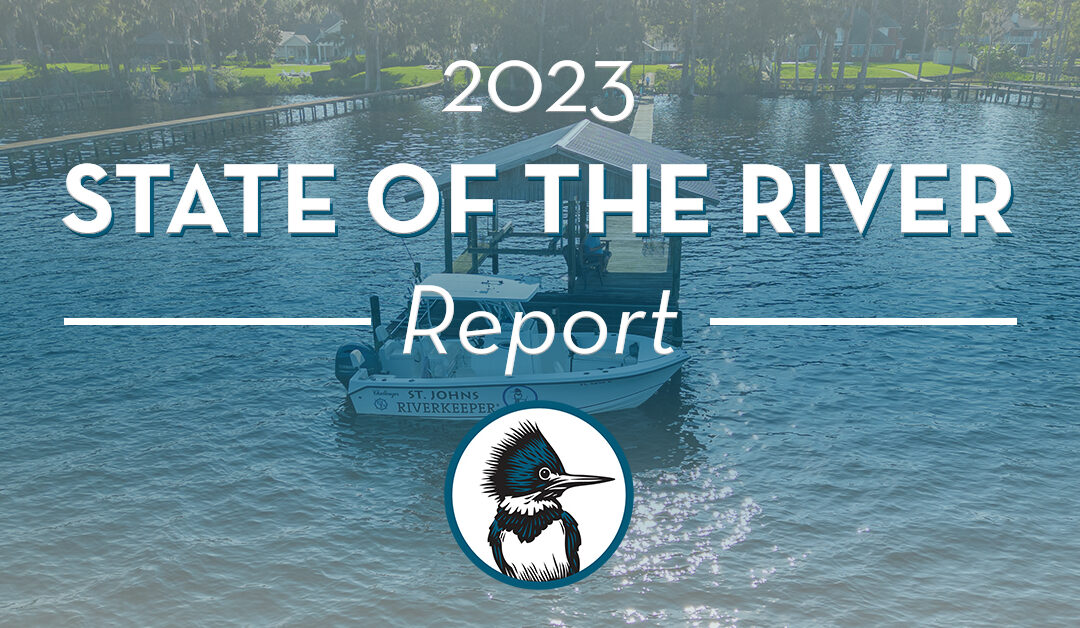The 2023 Lower St. Johns River Report (LSJRR) provides a stark reminder of the fragile health of our river and its tributaries, but also documents the powerful combination of responsible regulation, reasonable incentives, education, citizen advocacy and political will to protect Florida waters for today and for future Floridians.
The 2023 LSJRR reports that total nitrogen (TN) levels are satisfactory both in the mainstem and the tributaries. This reduction demonstrates that collectively we can reverse the trajectory of pollution in the St. Johns. But, it takes public outcry and legal maneuvering to hold those polluting – including industry, utilities and government – accountable. After several St. Johns Riverkeeper-led lawsuits and public outcry, the Lower St. Johns River Basin Management Action Plan (BMAP) and River Accord pollution plans were born, tackling and succeeding in reducing nitrogen in the St. Johns River. However, it did not go far enough. The 2023 LSJRR also reports that TN levels are slightly increasing in the river’s freshwater mainstem. The City of Jacksonville and others have failed to reach their regulatory goals and the over-reliance of water quality trading credits falls short of the improvements needed. More needs to be done and a reboot of the River Accord is warranted.
Overshadowing the limited improvements are significant areas of concern. Severely polluted tributaries throughout Duval County threaten human health with fecal bacteria, heavy metals and other contaminants. Rising water levels and increasing saltwater intrusion are changing our river’s ecology and threatening submerged aquatic vegetation (SAV) as well as the fisheries that depend on them. Loss of wetlands due to development and inadequate mitigation are making Northeast Florida more vulnerable to flooding.
Climate change is making these existing problems worse and our river more vulnerable.
Rising sea levels are increasing storm surge, causing more septic tanks to fail, undermining infrastructure, pushing saltwater further upstream, and threatening the health of our river and our communities. In a warmer world, evaporation rate increases add more moisture to the air. This increased moisture leads to more intense rainfall and hurricanes. As a result, frequent flooding increases stormwater runoff, flushing more pollution and sewage into our waterways threatening our health, our quality of life and our economy.
More pollution in the St. Johns River watershed and warmer water temperatures fuel harmful algae outbreaks that can be highly toxic and threaten our health. Warmer waters hold less dissolved oxygen, which can lead to fish kills.
However, we can and we must make a difference by working collaboratively throughout the watershed to tackle these threats and to do our part locally to combat climate change.
What’s Next? Let’s Dive In.
Join us over the next two months for a six-part series breaking down the LSJRR, tackling our river’s vulnerabilities and charting a course to reclaim a vibrant and healthy St. Johns River.
- Does a Resilient Jacksonville = a Resilient St. Johns?
- The River Accord: The Next Chapter
- Reclaiming Jacksonville’s Tributaries
- Florida’s Growing Sewage Crisis
- SAVing our River’s Grasses, Wetlands and Wild Land
- Calling All Watershed Warriors – Protecting 310 Miles of River, Tribs and Springs
If there are specific topics you would like to hear about within this series, please email us at info@stjohnsriverkeeper.org.
